Ever heard of Amanita caesarea? Did you know there are a few species of Amanita that people do actually eat? While definitely not recommended for beginners, there are some folks out there who enjoy chowing down on Caesar’s mushroom!
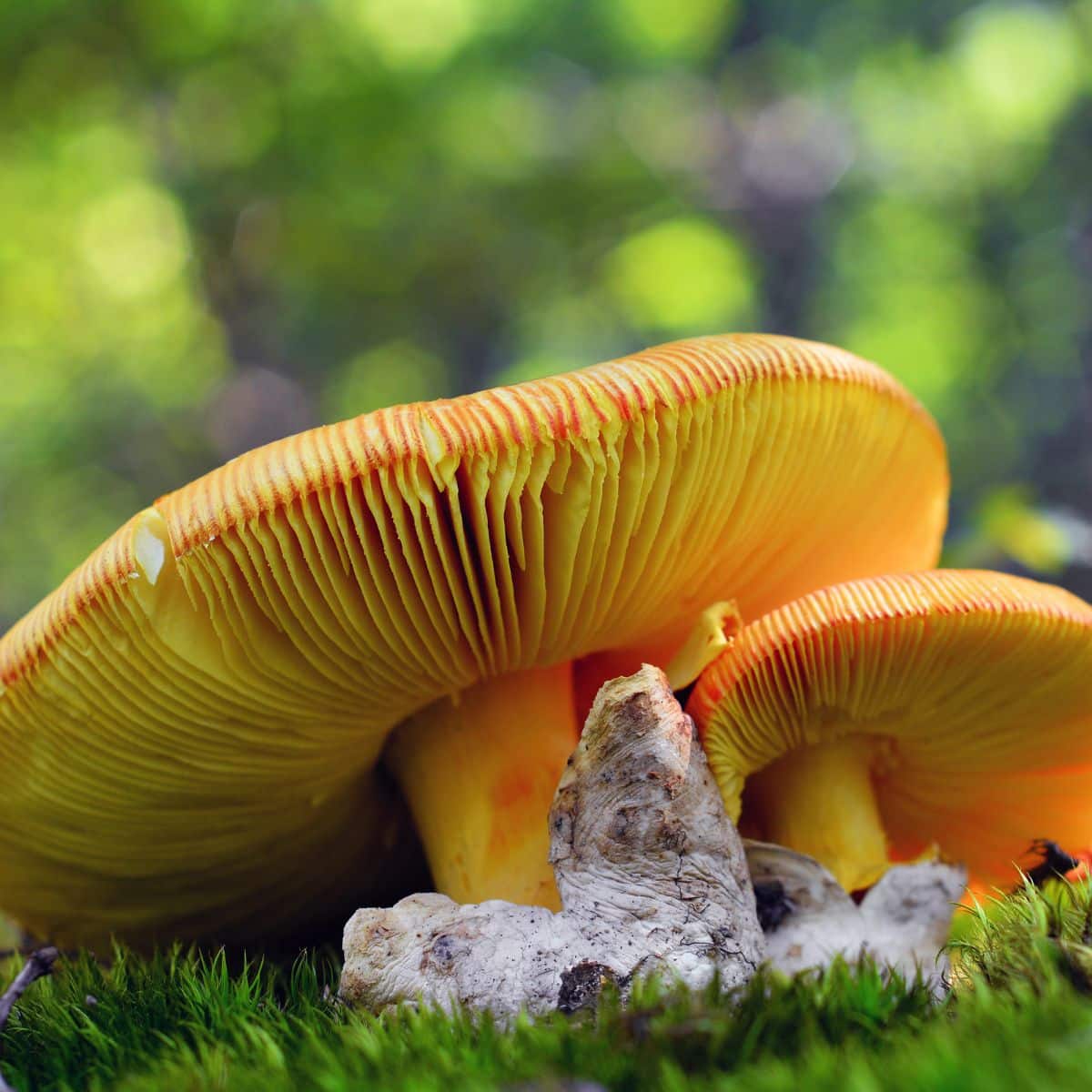
This mushroom, along with its North American cousins Amanita jacksonii and Amanita arkansana (and others), are part of a small group of edible Amanitas spread throughout different continents.
This article describes Amanita ceasarea, the European Caesar mushroom. The North American species are very similar, but DNA puts them as separate species. To learn about the North American species, consult our article “Caesar Mushrooms Foraging and Lookalikes (US Edition)“
Now you may be asking, “isn’t eating an Amanita dangerous? Aren’t there deadly species as well that will kill you?”
Why…yes! Yes there are! For this reason, eating them is highly discouraged for beginners to mushroom identification and hunting. Honestly, they should be considered an off-limits edible for all but the most experienced of shroomers.
Yet that doesn’t mean you shouldn’t learn about Caesar’s mushroom! This colorful beauty is full of history and shrouded in taxonomical mystery.
Alea iacta est!
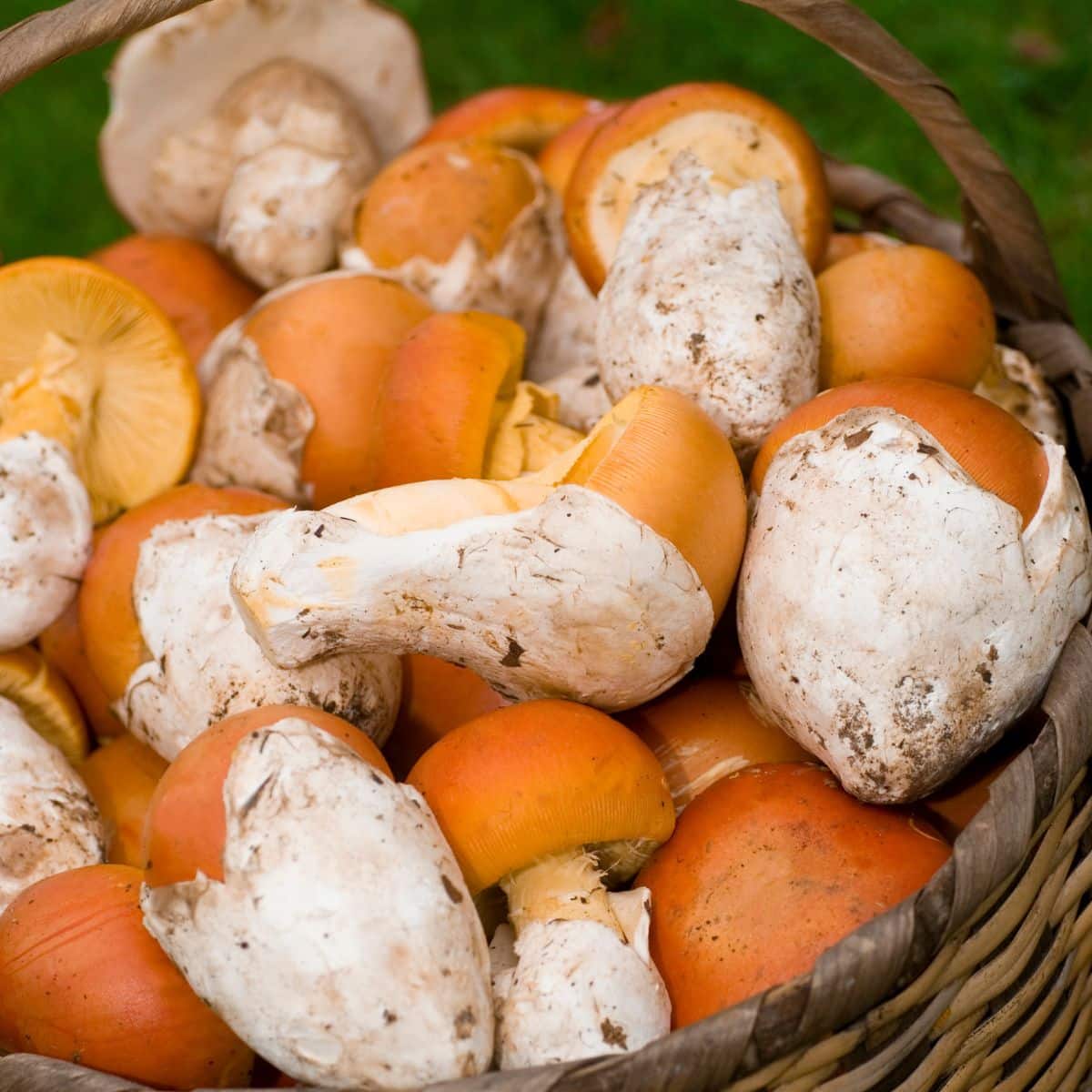
Jump to:
How to Identify Amanita caesarea
The most obvious feature of Amanita caesarea is its gorgeous color, which can be dull to quite vivid. Below are more identification characteristics:
Cap:
- Convex and becoming flat with age
- Color is orange to a brilliant red-orange
- Caps are pretty hefty, from a few inches in diameter to up to 6 (around 15 cm)
- While the surface is mostly smooth, the edges are lightly striated
- It’s worth noting that, unlike some other Amanita species, this one does not usually have any warts or patches on the cap.
- This mushroom displays light yellow “free gills”, which means the gills on the underside of the cap are not attached to the stem. Whether gills are free or attached is often an important factor in mushroom identification so look closely!
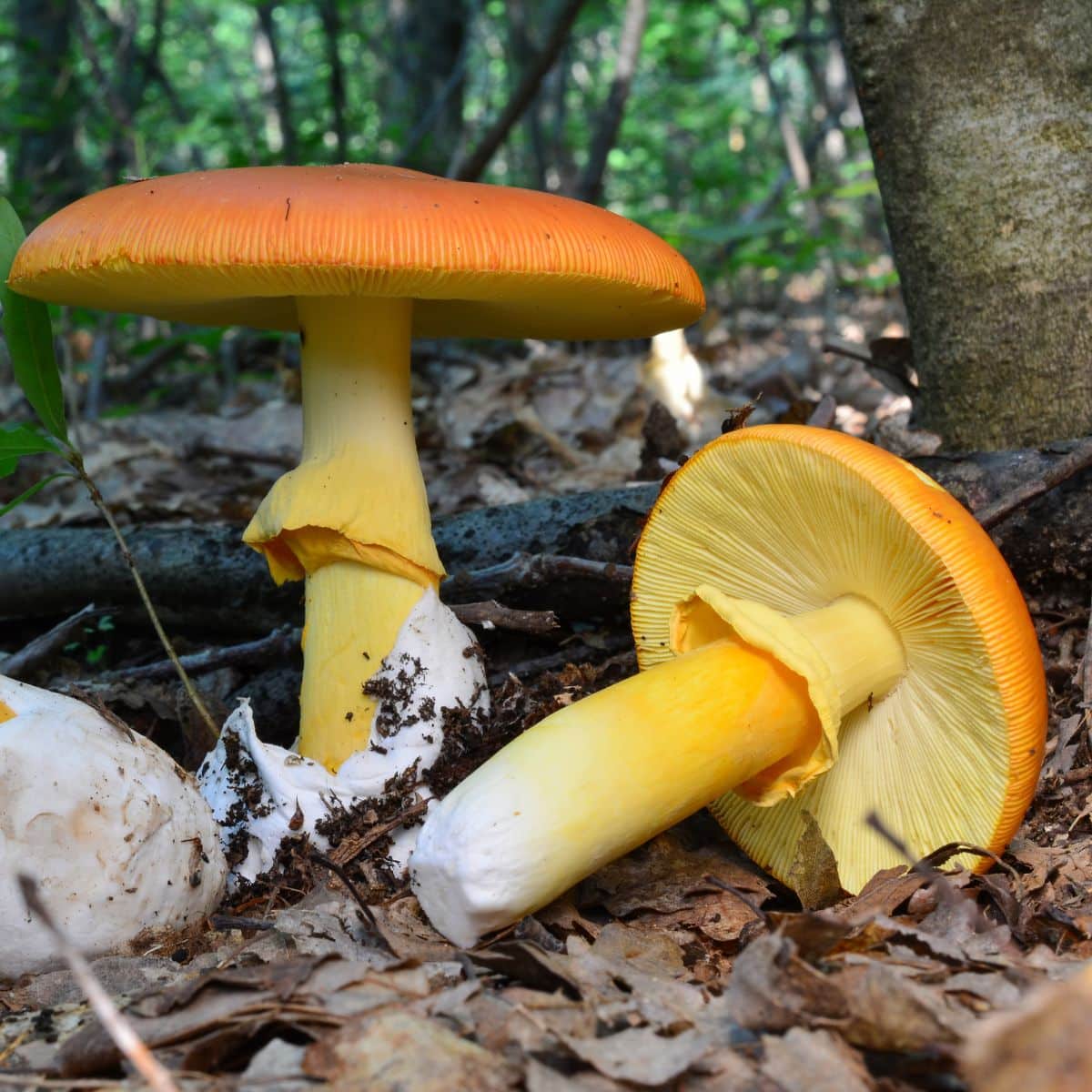
Stem:
- The long cylindrical stem (or stipe) is usually around 3-6 inches tall (8-15 cm) and 1-1.5 inches wide (around 2-4 cm).
- Solid and a pale yellow to orange color on the outside with pale yellow to white flesh on the inside.
- The stem often displays a ring (or annulus), which is a skirt of flesh under the cap that’s attached to the stem. This ring is the remnant of the partial veil; a layer of tissue that covers the gills to protect them while the mushroom is developing.
- At the base of the stem you’ll often find a cup-like structure called a volva. This is the remnant of the universal veil; another layer of tissue that encloses the entire mushroom in a little “egg” when young. The volva is often beneath the dirt, so dig carefully around the mushroom to make sure it is or is not there!
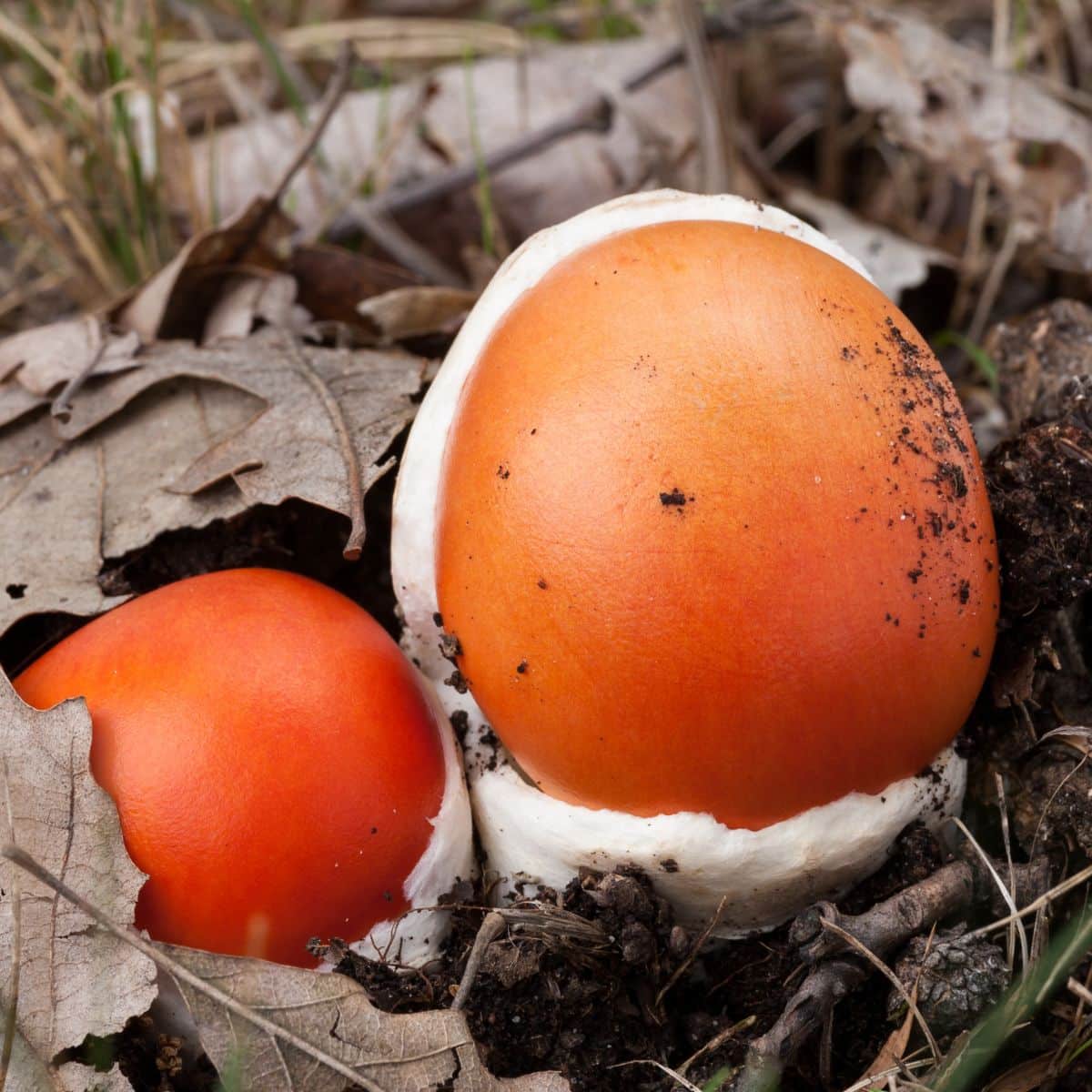
Habitat:
- Ranges from North Africa to southern Europe, mainly in Italy. This mushroom does not exist (as far as we know right now), in the United States but there are similar US species (more on that below).
- Amanita caesarea is mycorrhizal, meaning it forms a symbiotic beneficial relationship with the roots of certain trees. You’ll find them fruiting under pine and oak.
- This mushroom grows directly on the ground, not on trees or dead wood.
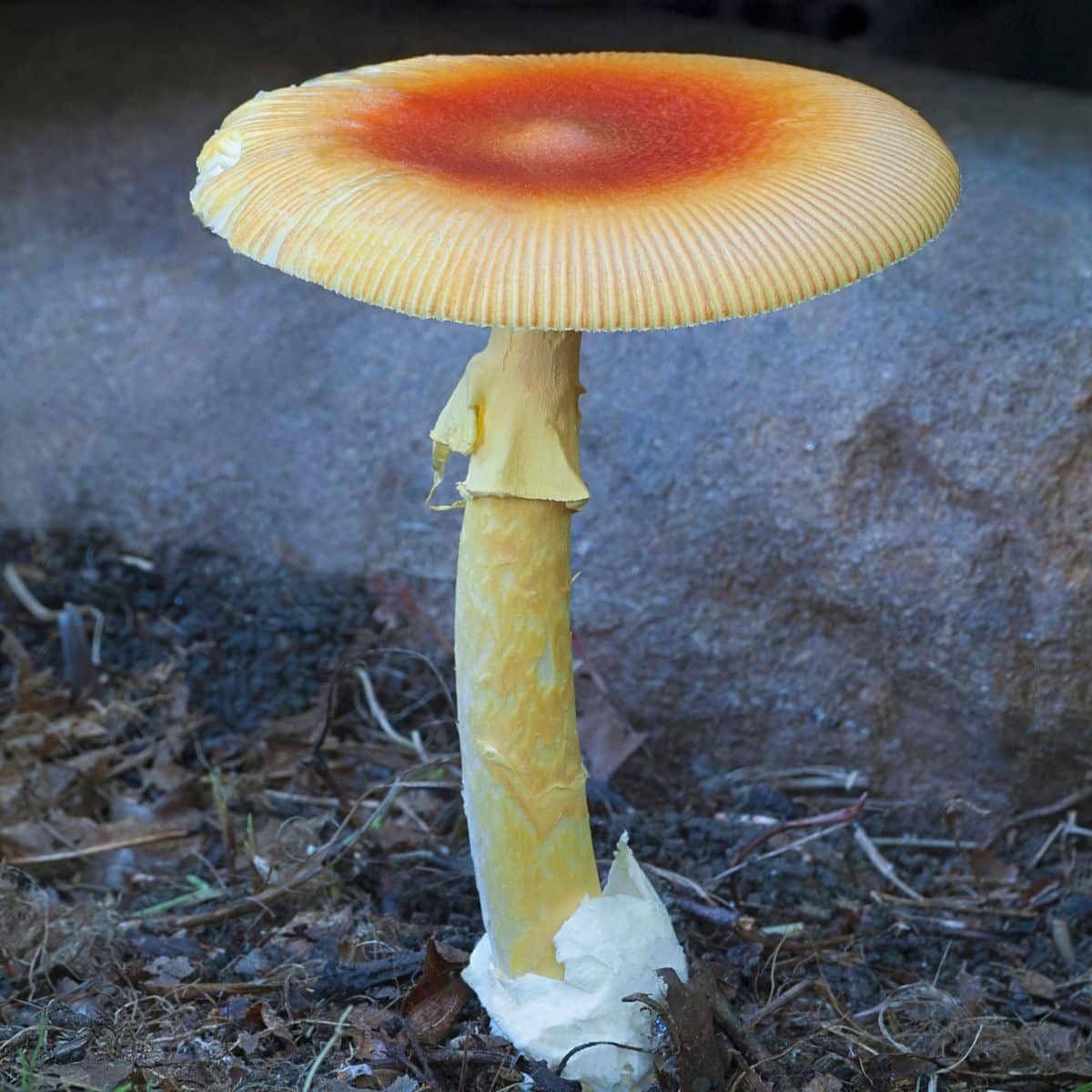
Time of Year:
- Early summer through mid-fall
Spore Print:
- White to a light, light yellow
Amanita caesarea vs. Amanita muscaria
It can be easy to confuse Caesar’s mushroom with another Amanita species, particularly Amanita muscaria (the fly agaric mushroom). While some people do take the fly agaric mushroom recreationally, it is considered poisonous and should be avoided in the wild.
Unfortunately many identification characteristics can change over a mushroom’s short life. Warts on a cap may falls off, a veil remnant could disintegrate, or you may not find evidence of a volva that was once there.
For these reasons, please take the below chart with a grain of salt. This should just give you a general idea of the differences. Identifying Amanitas for the purpose of eating them should only be done by experts, and who wants to take that risk?
Amanita caesarea
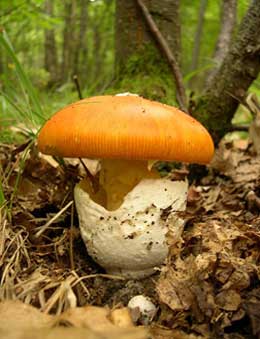
- Cap is more of a red-orange
- Cap is smooth with no warts, although lightly striated at the edges (visible in the above picture).
- Stem is more of a pale yellow to orange
- Gills are a light yellow to orange, but always at least slightly colorful
- Usually found around oak and pine
Amanita muscaria
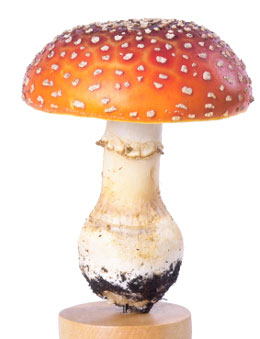
- Cap is more of a deep red (although this color may fade with age).
- Cap often has white “warts” on the top, a remnant of the universal veil. Again, these may fall off with age.
- The stem is pure white
- Gills are pure white
- Usually found around spruce, birch, and sometimes pine
Of course there are Amanita species far deadlier than Amanita muscaria, so I can’t stress enough that you need more than just the Internet to identify Amanita caesarea!
Always have a hands-on expert teach you mushroom identification if you plan on eating anything. And make sure you back it up with a good book like the one on the right.
The American Caesar’s Mushroom and Other Species
Amanita caesarea doesn’t grow in North America (as far as we know), so if you’re in the United States like me you’re not going to find it.
You may find, however, one of the similar North American species. There are a number of American Caesar’s mushrooms, often called the “Slender Caesar’s” because their stems are longer and thinner than the European version. Two common examples are:
Amanita jacksonii:
Commonly found from Quebec to Mexico. This species has very similar identification features with a volva, a striated orange cap, and yellow gills (right).
If you’re in the United States and think you’ve found Amanita caesarea, what you’ve probably found is Amanita jacksonii. People do eat them, but again it is not encouraged if you’re inexperienced.
Amanita arkansana:
Another similar species found in southeastern America. This mushroom is overall lighter in color, with gills that fade to white and a cap that’s more yellow-orange than red.
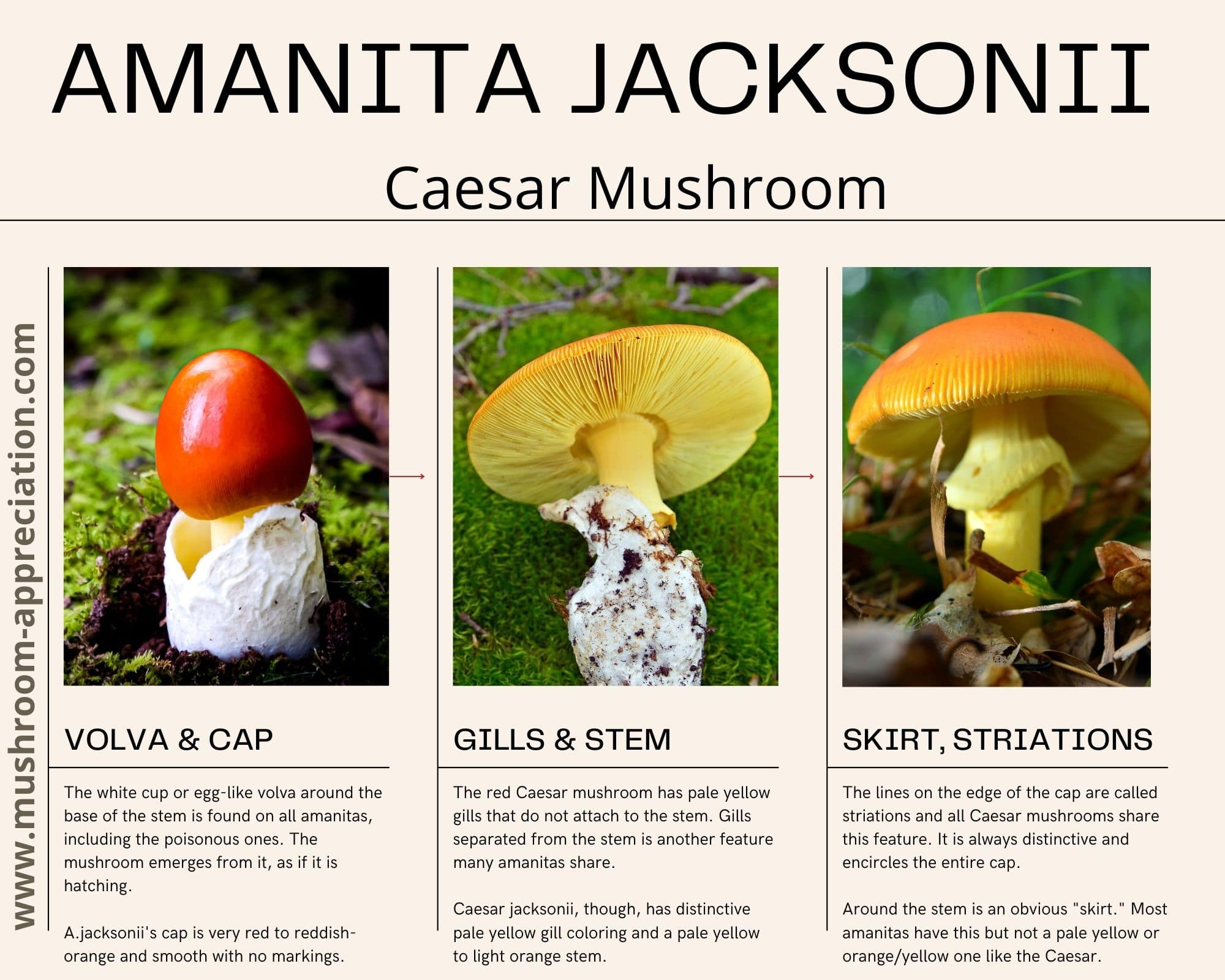
The Caesar Species
So what’s the relationship between the American and European versions? How many species of “Slender Caesar’s” exist in the United States? What defines a true Amanita caesarea from one of the many similar looking species across the world?
The truth is nobody knows! As with so many mushroom species, their minute differences make it extremely difficult to say what truly distinguishes them.
Only in-depth DNA analysis can clear up the confusion, so taxonomy and naming is always in flux. There are still so many unknowns about Amanitas. I’m sure we’ll see some species re-classification in the future as our knowledge advances.
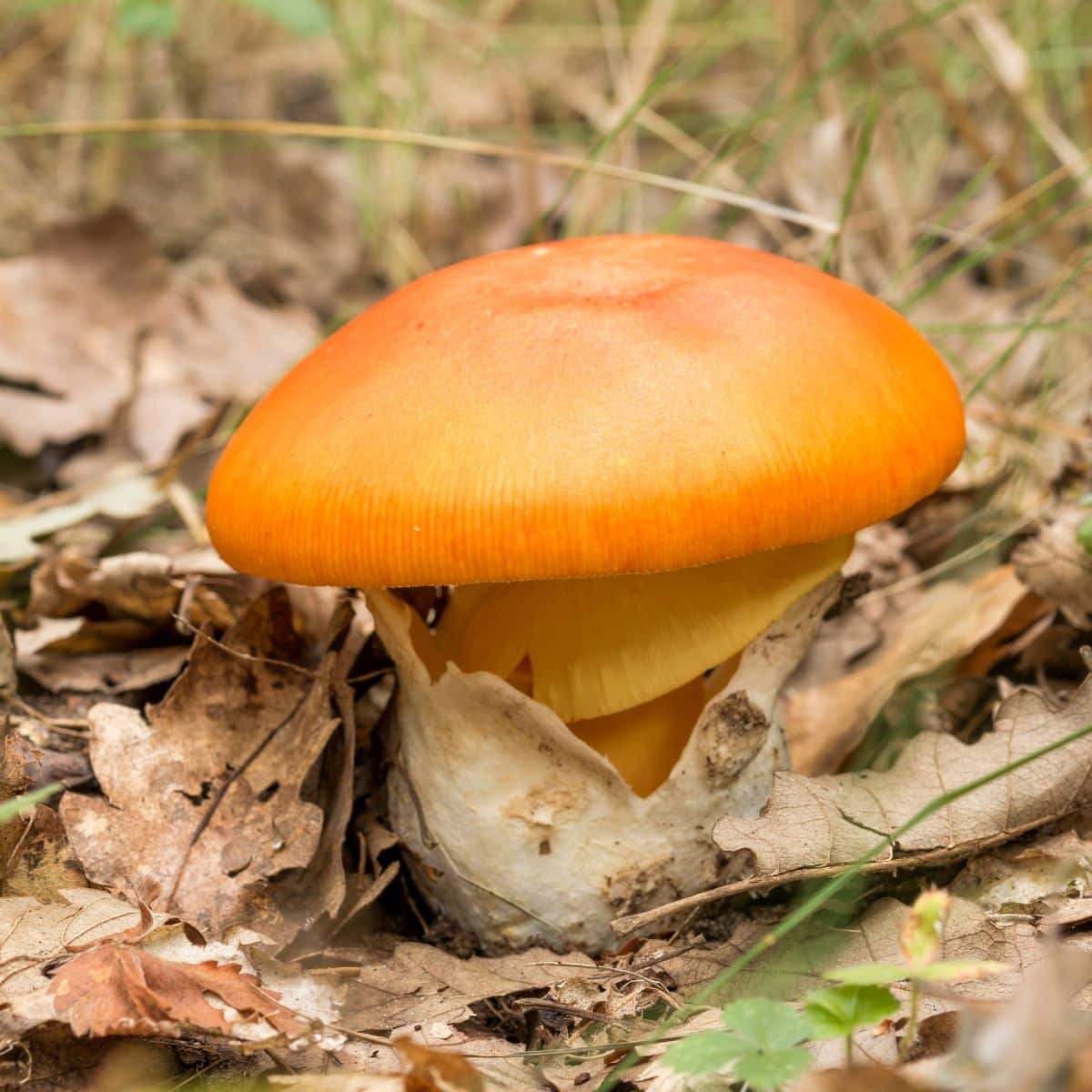
Let’s Eat: Cooking With Ceasar Mushrooms
So far I’ve been pretty negative about eating Amanita caesarea, mainly to discourage beginners from being too cavalier about finding and consuming this mushroom.
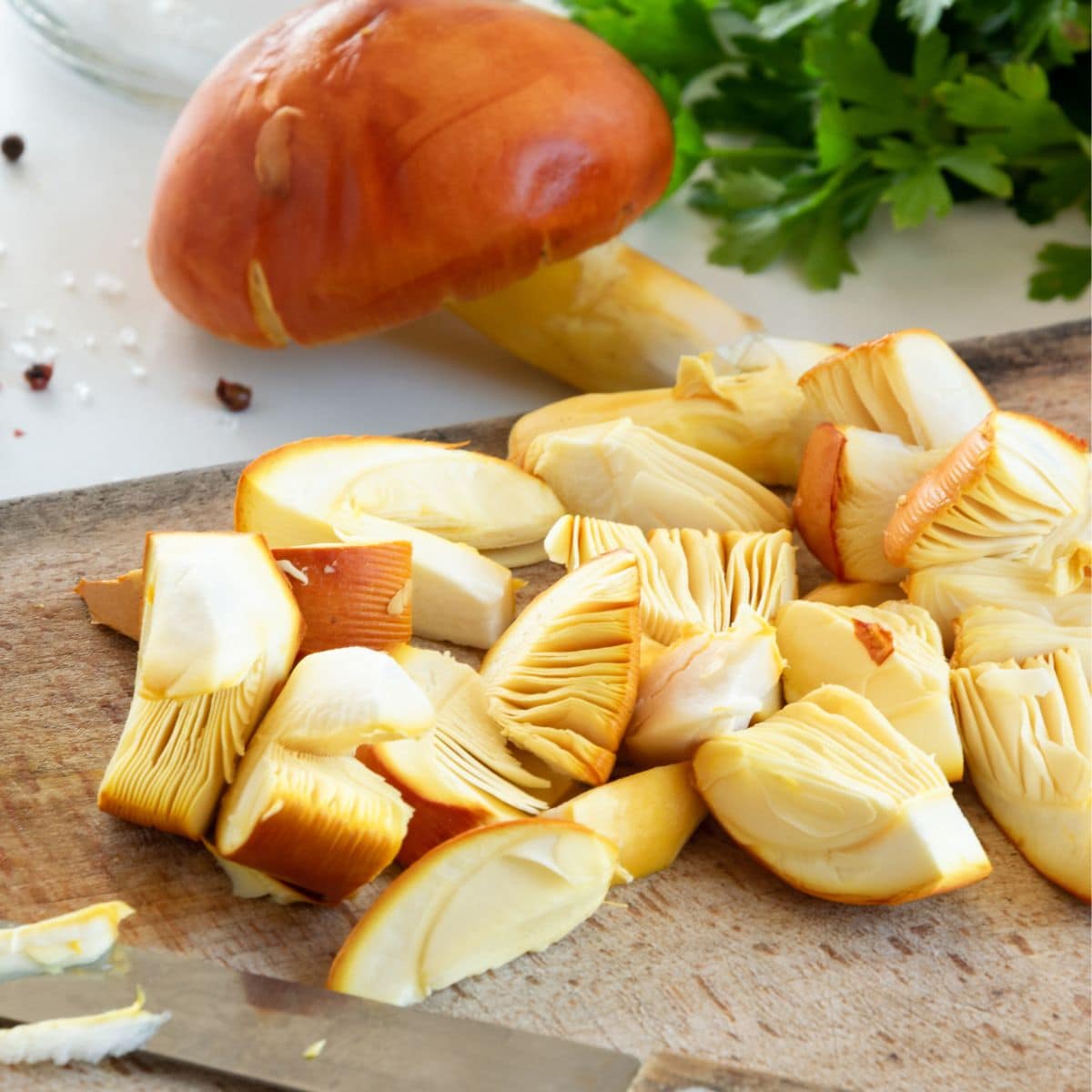
Yet people do eat them all the time and they are considered a choice edible! Amanita caesarea is a delicacy in Italy, where they’re called ovoli mushrooms (ovolo means egg). The American versions are popular as well here in the US.
So if you’re an experienced mushroom hunter, or know someone who is, Caesar’s mushroom can be a delicious find.
They have a delicate flavor, so they’re most often used in salads or prepared alone to showcase their light taste. The point is not to overpower the mushroom flavor with other ingredients.
You can lightly sauté them with a little oil and garlic; although some insist cooking them in general is sacrilege. I almost always encourage cooking mushrooms before eating them, as it makes them more digestible and often removes any natural toxins.
Not many wild mushrooms are edible raw, but this one is considered a rare delicacy so let’s live a little. Keep in mind that you shouldn’t necessarily substitute other wild mushrooms in this recipe!
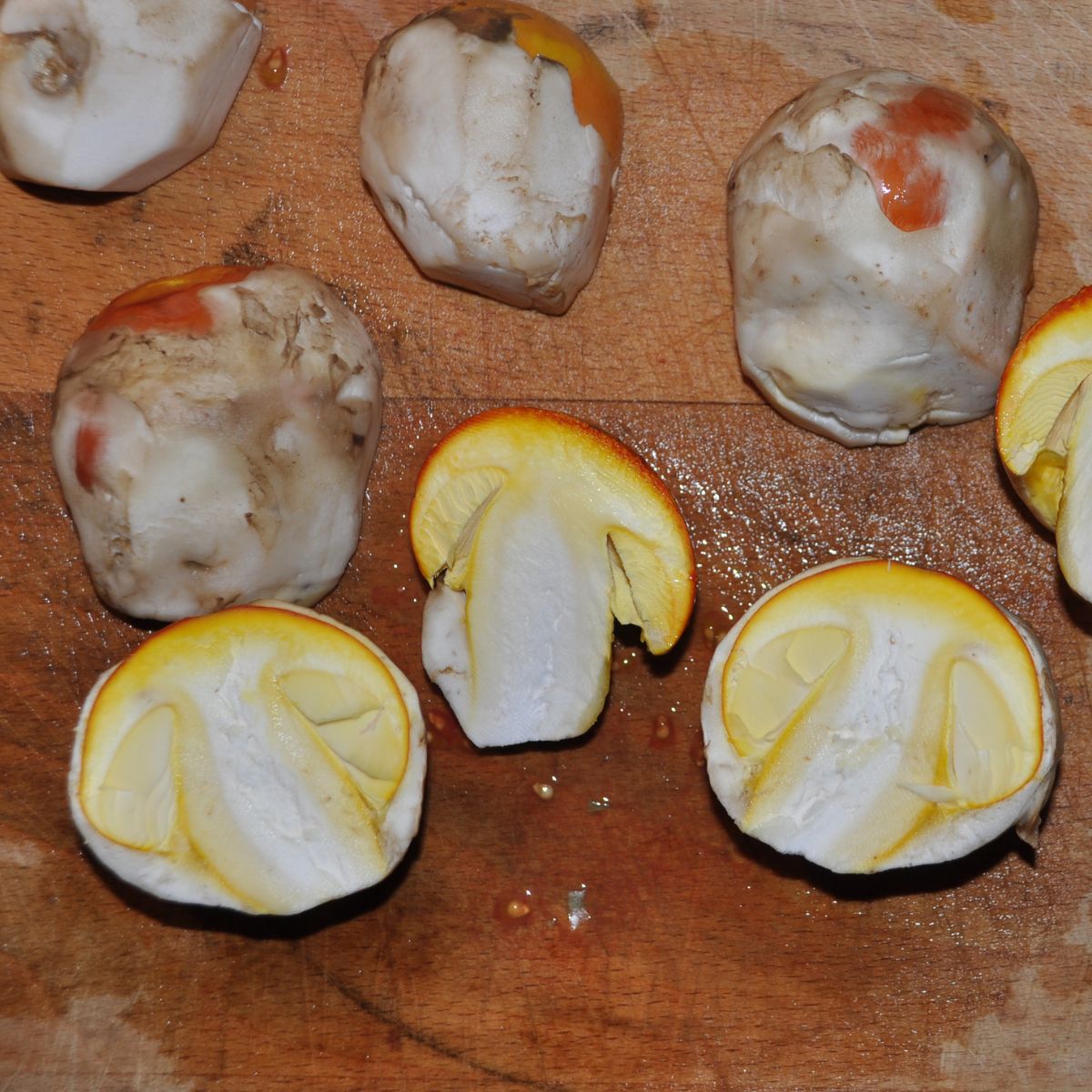
The Simple Caesar
Ingredients:
- Amanita caesarea (or jacksonii if you’re in the US), as many as you want to eat (but not too many!)
- Olive oil
- Lemon Juice
- Salt
- Pepper
Steps:
- Wipe mushrooms down gently with a damp cloth. Make sure all dirt is removed. Slice in half lengthwise thinly.
- Add a little salt. Don’t go overboard, just lightly salt each piece. Wait a few minutes for the salt to absorb.
- Season with lemon juice, olive oil, and a pinch of pepper.
- Eat and enjoy!
I didn’t list amounts for the seasonings, as you really don’t need a lot. Remember that you want to preserve the flavor of the mushrooms! Measurements should be in units of “drops”, “pinches”, and “dashes”.
Too simple for you? Looking for a slightly heartier meal than just mushrooms? You can add these seasoned mushrooms to any salad to really liven it up. Some good salad ingredients are:
- Celery
- Red peppers
- Spinach/lettuce
- Any other greens/vegetables with a mild taste
- Red wine vinegar (a SMALL amount, you don’t want to overpower your mushrooms)
- Parmesan cheese
More recipes to try:
I hope you’ve enjoyed learning about the different varieties of the beautiful Caesar’s mushroom. Please stay safe and stay hungry!
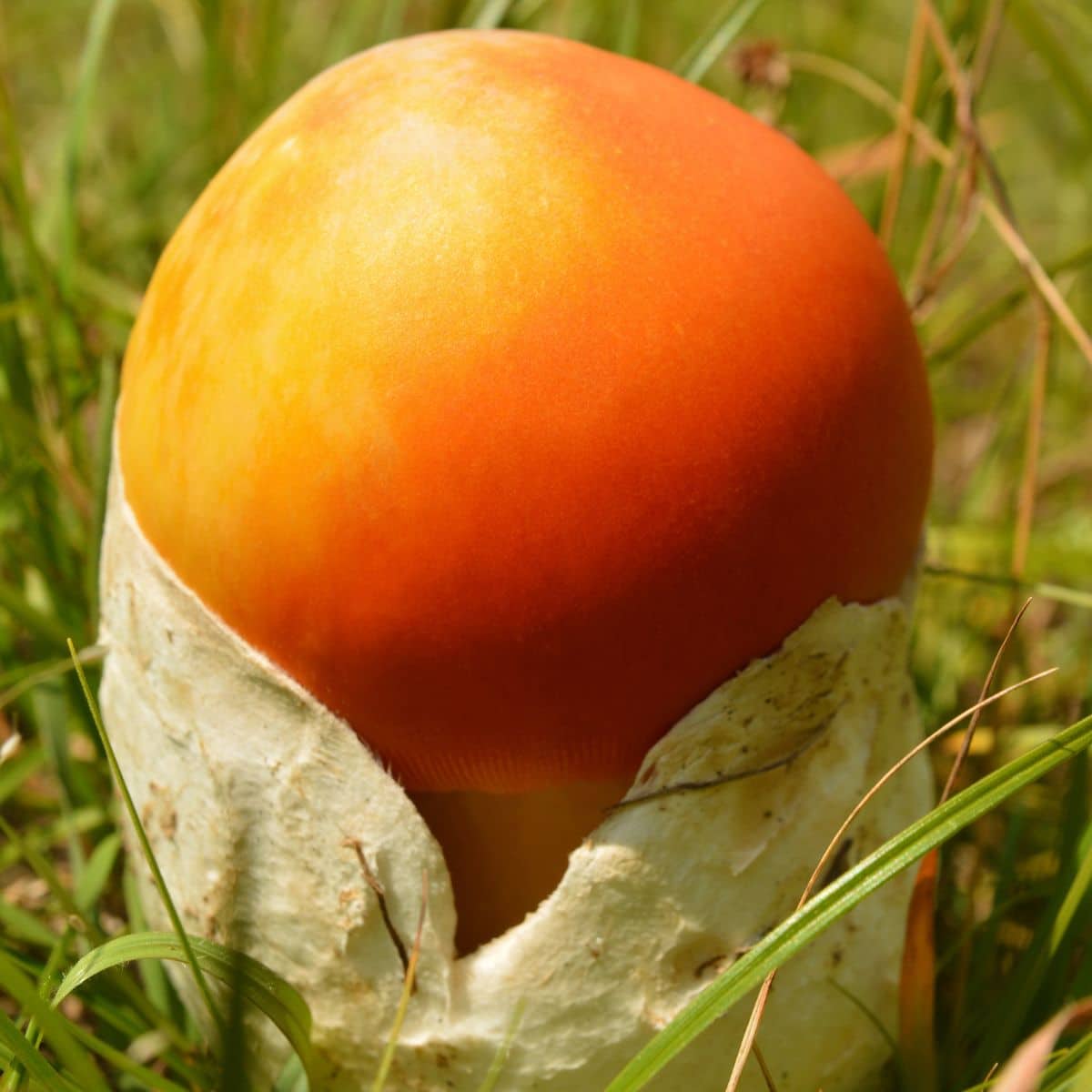






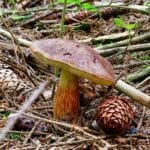

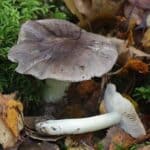

Leave a Reply